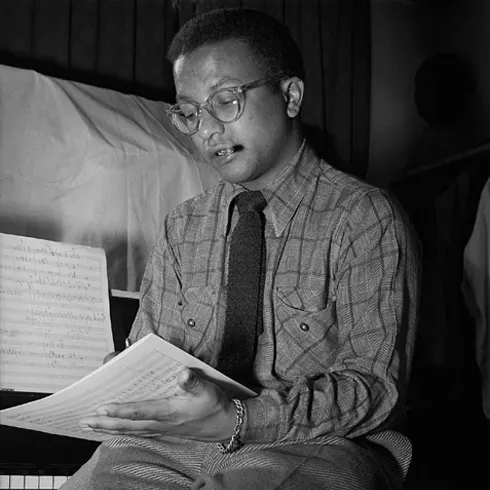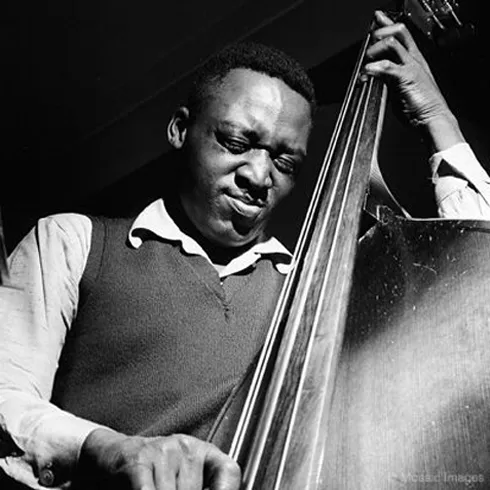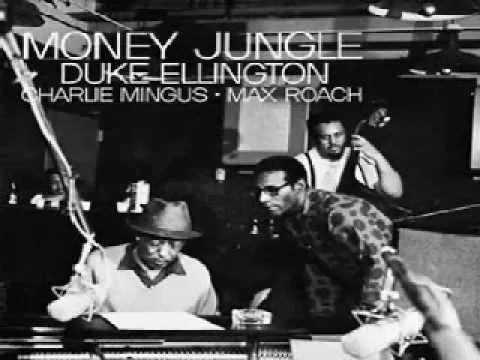Duke Ellington (piano), Charles Mingus (doble bass) and Max Roach (drums). From the album Money Jungle (1963).
In 1938, a young composer named Billy Strayhorn approached Ellington after a concert to show him one of his compositions. It was “Lush Life”, one of the best jazz ballads. Ellington was so impressed that he hired him and Strayhorn began writing arrangements for the big band, beginning a relationship that would last until his death in 1967. Strayhorn became Ellington’s professional partner who contributed decisively in establish the big band’s sound. The two agreed that their interests were not commercial, but artistic. At the beginning of 1939, Ellington recorded again in combo, but from March he resumed the activity of the big band and toured Europe.

Billy Strayhorn
Then came bassist Jimmy Blanton, but his stay was only a few months, as he died of tuberculosis in 1942. However, he was able not only to give new impetus to Ellington’s rhythm section, but also to change the role of the double bass in jazz. He was the first one to create a rhythmic pulse, to provide ornaments and counter melodies, and to play once in a while as a soloist, laying the foundations of the double bass in modern jazz. The third major addition to the big band at that time was tenor saxophonist Ben Webster. He had an unprecedented mastery of the sound possibilities of his instrument in jazz, exhibiting choppy sounds, groans, barks, grunts, shouts and whispers.

Jimmy Blanton
The theme is fun and smiling with a harmonic AABA structure and a medium-fast tempo. Ellington develops his discourse with intensity using the blues harmonies. Next Mingus comes in making a brief fast-paced solo with good melodic taste. Ellington returns to play the theme and begins a second solo with imagination and creativity. Then he exchanges two four-bars solos with Roach and exposes the theme for the third and last time.
© United Artists Records

